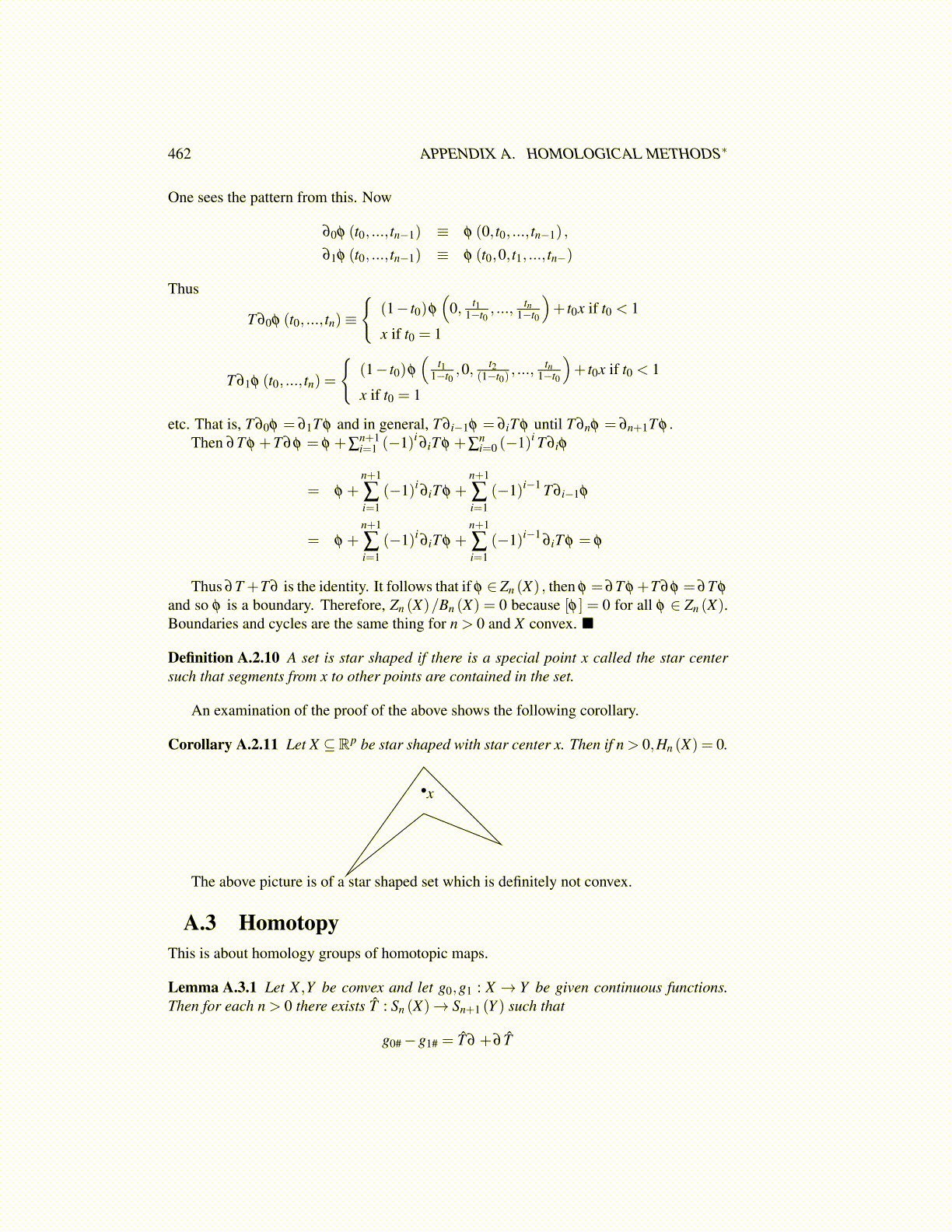
462 APPENDIX A. HOMOLOGICAL METHODS∗
One sees the pattern from this. Now
∂0φ (t0, ..., tn−1) ≡ φ (0, t0, ..., tn−1) ,
∂1φ (t0, ..., tn−1) ≡ φ (t0,0, t1, ..., tn−)
Thus
T ∂0φ (t0, ..., tn)≡
{(1− t0)φ
(0, t1
1−t0, ..., tn
1−t0
)+ t0x if t0 < 1
x if t0 = 1
T ∂1φ (t0, ..., tn) =
{(1− t0)φ
(t1
1−t0,0, t2
(1−t0), ..., tn
1−t0
)+ t0x if t0 < 1
x if t0 = 1
etc. That is, T ∂0φ = ∂1T φ and in general, T ∂i−1φ = ∂iT φ until T ∂nφ = ∂n+1T φ .Then ∂T φ +T ∂φ = φ +∑
n+1i=1 (−1)i
∂iT φ +∑ni=0 (−1)i T ∂iφ
= φ +n+1
∑i=1
(−1)i∂iT φ +
n+1
∑i=1
(−1)i−1 T ∂i−1φ
= φ +n+1
∑i=1
(−1)i∂iT φ +
n+1
∑i=1
(−1)i−1∂iT φ = φ
Thus ∂T +T ∂ is the identity. It follows that if φ ∈ Zn (X) , then φ = ∂T φ +T ∂φ = ∂T φ
and so φ is a boundary. Therefore, Zn (X)/Bn (X) = 0 because [φ ] = 0 for all φ ∈ Zn (X).Boundaries and cycles are the same thing for n > 0 and X convex. ■
Definition A.2.10 A set is star shaped if there is a special point x called the star centersuch that segments from x to other points are contained in the set.
An examination of the proof of the above shows the following corollary.
Corollary A.2.11 Let X ⊆Rp be star shaped with star center x. Then if n > 0,Hn (X) = 0.
x
The above picture is of a star shaped set which is definitely not convex.
A.3 HomotopyThis is about homology groups of homotopic maps.
Lemma A.3.1 Let X ,Y be convex and let g0,g1 : X → Y be given continuous functions.Then for each n > 0 there exists T̂ : Sn (X)→ Sn+1 (Y ) such that
g0#−g1# = T̂ ∂ +∂ T̂